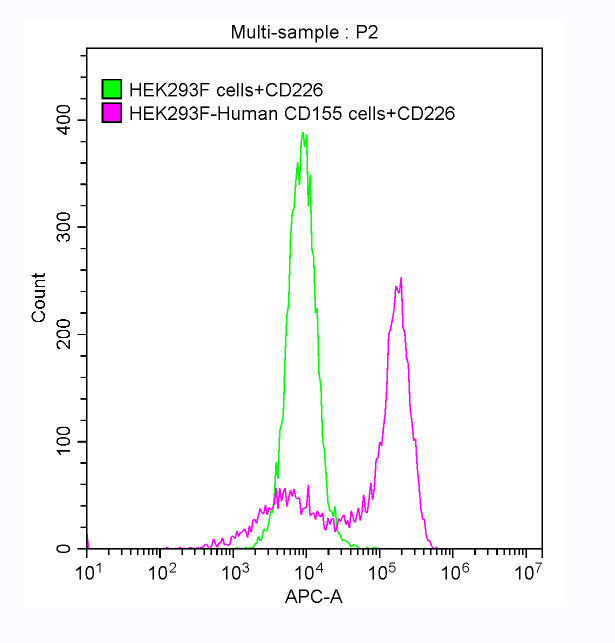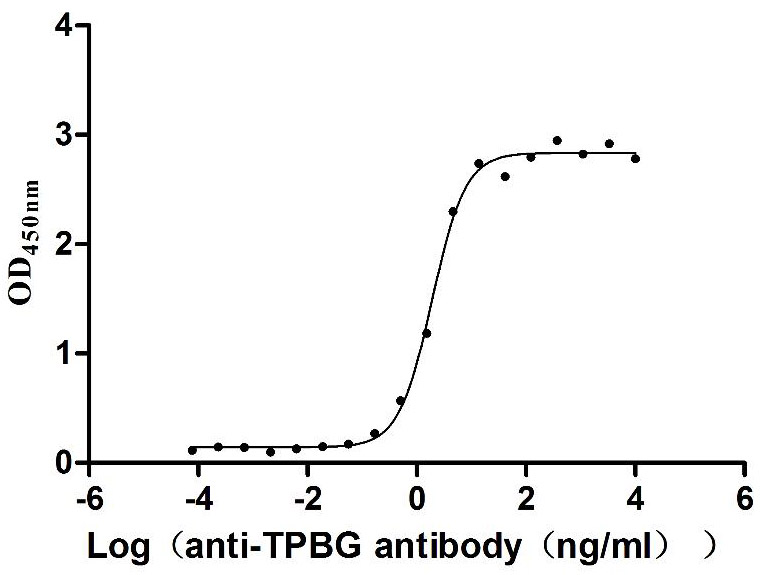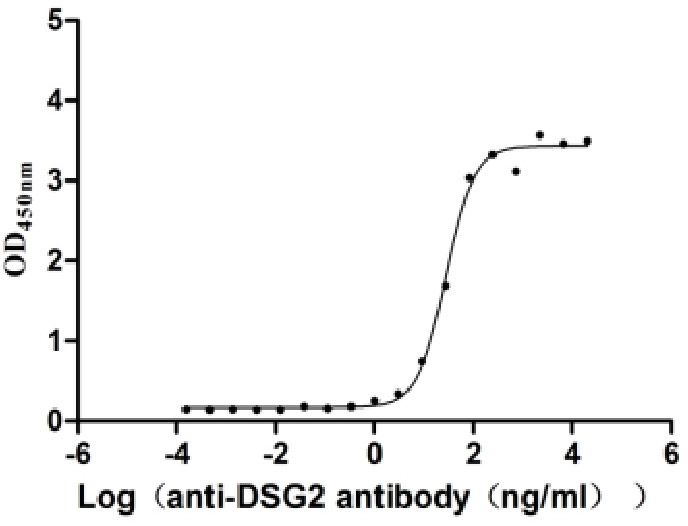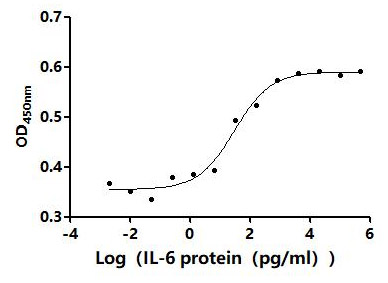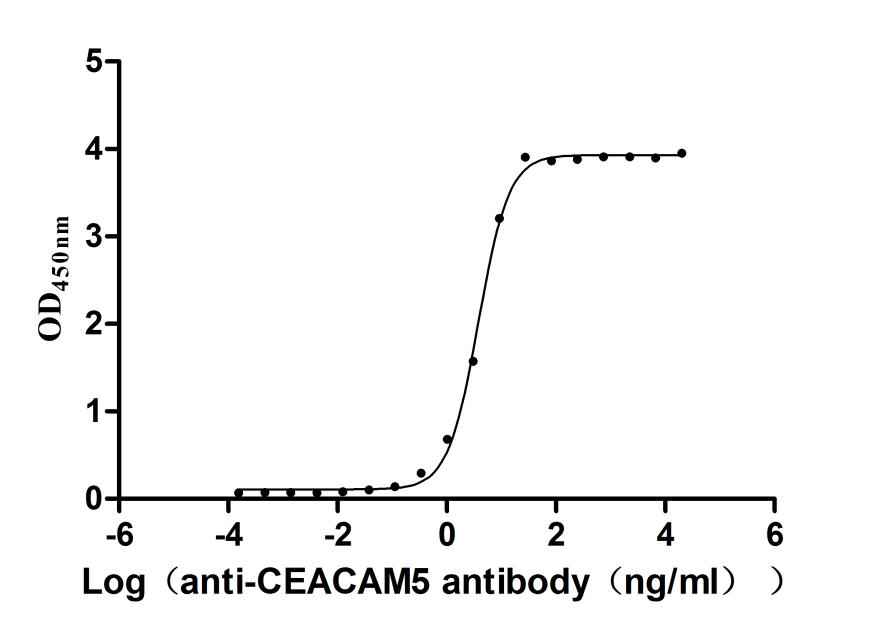Recombinant Mouse H (+)/Cl (-) exchange transporter 3 (Clcn3), partial
-
中文名稱:Recombinant Mouse H(+)/Cl(-) exchange transporter 3(Clcn3) ,partial
-
貨號(hào):CSB-YP005482MO
-
規(guī)格:
-
來源:Yeast
-
其他:
-
中文名稱:Recombinant Mouse H(+)/Cl(-) exchange transporter 3(Clcn3) ,partial
-
貨號(hào):CSB-EP005482MO
-
規(guī)格:
-
來源:E.coli
-
其他:
-
中文名稱:Recombinant Mouse H(+)/Cl(-) exchange transporter 3(Clcn3) ,partial
-
貨號(hào):CSB-EP005482MO-B
-
規(guī)格:
-
來源:E.coli
-
共軛:Avi-tag Biotinylated
E. coli biotin ligase (BirA) is highly specific in covalently attaching biotin to the 15 amino acid AviTag peptide. This recombinant protein was biotinylated in vivo by AviTag-BirA technology, which method is BriA catalyzes amide linkage between the biotin and the specific lysine of the AviTag.
-
其他:
-
中文名稱:Recombinant Mouse H(+)/Cl(-) exchange transporter 3(Clcn3) ,partial
-
貨號(hào):CSB-BP005482MO
-
規(guī)格:
-
來源:Baculovirus
-
其他:
-
中文名稱:Recombinant Mouse H(+)/Cl(-) exchange transporter 3(Clcn3) ,partial
-
貨號(hào):CSB-MP005482MO
-
規(guī)格:
-
來源:Mammalian cell
-
其他:
產(chǎn)品詳情
-
純度:>85% (SDS-PAGE)
-
基因名:Clcn3
-
Uniprot No.:
-
別名:Clcn3; Clc3; H(+)/Cl(-) exchange transporter 3; Chloride channel protein 3; ClC-3; Chloride transporter ClC-3
-
種屬:Mus musculus (Mouse)
-
蛋白長度:Partial
-
蛋白標(biāo)簽:Tag?type?will?be?determined?during?the?manufacturing?process.
The tag type will be determined during production process. If you have specified tag type, please tell us and we will develop the specified tag preferentially. -
產(chǎn)品提供形式:Lyophilized powder
Note: We will preferentially ship the format that we have in stock, however, if you have any special requirement for the format, please remark your requirement when placing the order, we will prepare according to your demand. -
復(fù)溶:We recommend that this vial be briefly centrifuged prior to opening to bring the contents to the bottom. Please reconstitute protein in deionized sterile water to a concentration of 0.1-1.0 mg/mL.We recommend to add 5-50% of glycerol (final concentration) and aliquot for long-term storage at -20℃/-80℃. Our default final concentration of glycerol is 50%. Customers could use it as reference.
-
儲(chǔ)存條件:Store at -20°C/-80°C upon receipt, aliquoting is necessary for mutiple use. Avoid repeated freeze-thaw cycles.
-
保質(zhì)期:The shelf life is related to many factors, storage state, buffer ingredients, storage temperature and the stability of the protein itself.
Generally, the shelf life of liquid form is 6 months at -20°C/-80°C. The shelf life of lyophilized form is 12 months at -20°C/-80°C. -
貨期:Delivery time may differ from different purchasing way or location, please kindly consult your local distributors for specific delivery time.Note: All of our proteins are default shipped with normal blue ice packs, if you request to ship with dry ice, please communicate with us in advance and extra fees will be charged.
-
注意事項(xiàng):Repeated freezing and thawing is not recommended. Store working aliquots at 4°C for up to one week.
-
Datasheet :Please contact us to get it.
靶點(diǎn)詳情
-
功能:May influence large dense-core vesicle exocytosis in adrenal chromaffin cells.; Strongly outwardly rectifying, electrogenic H(+)/Cl(-)exchanger which mediates the exchange of chloride ions against protons. The CLC channel family contains both chloride channels and proton-coupled anion transporters that exchange chloride or another anion for protons. The presence of conserved gating glutamate residues is typical for family members that function as antiporters.; Strongly outwardly rectifying, electrogenic H(+)/Cl(-)exchanger which mediates the exchange of chloride ions against protons. Facilitates endosomal acidification and chloride accumulation in hepatocytes.; Strongly outwardly rectifying, electrogenic H(+)/Cl(-)exchanger which mediates the exchange of chloride ions against protons.
-
基因功能參考文獻(xiàn):
- intracellular Cl(-) regulation by ANO1/ClC-3 participates in HER2 transcription, mediating the PI3K/AKT/mTOR and/or STAT3 signaling pathway(s) in HER2-positive breast cancer cells. PMID: 29949674
- Abrogating ClC-3 blunts lipopolysaccharide-induced Inflammation via blocking the TLR4/NF-kappaB pathway. PMID: 27363391
- Results have shown that the expression of ClC-3 was reduced in hypertrophic H9c2 cells, primary rat neonatal cardiomyocytes and myocardium of C57/BL/6 mice and that ClC-3 played an important role in beta-adrenergic cardiac hypertrophy. PMID: 29158167
- we conclude that the expression of ClC-3 chloride channels in osteoblasts helps them respond to PTH stimulation, which mediates osteogenic differentiation. PMID: 28437476
- our findings show that Cl(-) channels can be activated by estrogen via ERa on the cell membrane and suggest that the ClC-3 Cl(-) channel may be one of the targets of estrogen in the regulation of osteoblast activity. PMID: 28468943
- ClC-3 is an endogenous inhibitor of neuropathic pain development and down-regulation of ClC-3 contributes to mechanical hypersensitivity. PMID: 27460962
- This study provides a new mechanism by which endophilin A2 regulates ClC-3 channel activity, and sheds light on how ClC-3 is transported to cell membranes to play its critical role as a chloride channel in VSMCs function PMID: 27760895
- roles of AQP-3 in AQP-3 aquaglyceroporin and ClC-3 chloride channels complex PMID: 26794461
- ClC-3 plays a major role in hyperglycemia induced hippocampal neuronal apoptosis. PMID: 26925421
- Threonine532 phosphorylation in ClC-3 channels is required for angiotensin II-induced Cl(-) current and migration in cultured vascular smooth muscle cells PMID: 26562480
- Data suggest that ClC3/Clcn3 expression is up-regulated by mechanical stimulation (persistent static compression here) in osteoblastic cell line and appears to participate in mechanically sensitive osteogenesis and gene expression regulation. PMID: 26436462
- Our findings demonstrated that ClC-3 deficiency inhibits atherosclerotic lesion development, possibly via suppression of JNK/p38 MAPK dependent SR-A expression and foam cell formation. PMID: 26363227
- plasmalemmal ClC-3d, like ClC-3a, mediates Cd(2+)-sensitive outwardly rectifying anion currents and that ClC-3d is distinct from the molecular entities of acid- and volume-sensitive anion channels. PMID: 24603049
- alternative splicing of Clcn3 results in proteins with different subcellular localizations, but leaves the transport function of the proteins unaffected PMID: 26342074
- ClC-3 deficiency prevent preadipocytes against palmitate-induced apoptosis via suppressing ER stress, and also suggested that ClC-3 may play a role in regulating cellular apoptosis and disorders of glucose and lipid metabolism during T2DM. PMID: 25218423
- Hypotonic stress can induce endocytosis in bone marrow derived macrophages and ClC-3 plays a central role in the endocytic process. PMID: 24850147
- Integrin beta3 mediates cerebrovascular remodelling during hypertension via Src/ClC-3 signalling pathway. PMID: 24611720
- ClC-3 deficiency attenuates cerebrovascular remodelling possibly via the suppression of MMPs/TIMP expression and TGF-beta1/Smad3 signalling pathway in this hypertension. PMID: 23786998
- CLC-3 confers chloride sensitivity to excitatory synapses, controls the magnitude of long-term potentiation and may provide a protective limit on Ca(2+) influx PMID: 23165767
- we determined the level of Autofluorescent storage material in chloride channel 3 gene-deficient mice both in response to aging and following mild global ischemia PMID: 22847174
- Results indicate that decrease of [Cl(-)](i) induced by ClC-3-dependent Cl(-) efflux promotes NF-kappaB activation. PMID: 23006728
- This study demonistrated that Clcn3 gene expression in mouse dorsal raphe nucleus PMID: 22534482
- The targeted inactivation of CIC-3 gene prevented cardioprotective effects of second-window ischemic preconditioning (swIPC) but not early ischemic preconditioning (eIPC) suggesting that VRCCs may contribute differently to eIPC and swIPC. PMID: 22179014
- These results demonstrate that three functional ion channel currents, I(KCa), I(Cl.vol), and I(Kir), are heterogeneously present in 3T3-L1 preadipocytes. I(KCa) and I(Cl.vol) participate in the regulation of cell proliferation. PMID: 21732368
- Loss of CLC-3 affects synaptic transmission by reduction in synaptic vesicle neurotransmitter loading, attributed to defective vesicular acidification, compared with that of wild-type hippocampal slices. PMID: 21378974
- ClC-3 is necessary for the activation of smooth muscle cells by TNF-alpha but not thrombin. Deficiency of ClC-3 markedly reduces neointimal hyperplasia following vascular injury. PMID: 21071705
- The results indicate that ClC-3 is a key component of native VSOACs in mammalian heart and plays a significant cardioprotective role against cardiac hypertrophy and failure. PMID: 19615374
- low pH uncouples chloride and hydrogen transport in CLC3 PMID: 19926787
- results indicated that the neurodegeneration observed in the Clcn3-/- mice was caused by an abnormality in the machinery which degrades the cellular protein and was associated with the phenotype of neuronal ceroid lipofuscinosis PMID: 12059962
- ClC-3 Cl(-) channel is not a major regulator of acinar cell volume, nor is it essential for determining the PMID: 12433961
- Mice lacking Clcn3 protein exhibit a complex phenotype associated with progressive degeneration of the hippocampus and retina. PMID: 12470859
- The N-terminus of CLC-3, which contains a CaMKII consensus sequence, was phosphorylated by CaMKII in vitro, and this residue is important in the gating of CLC-3 at the plasma membrane. PMID: 14754994
- involvement of ClC-3 in endosomal acidification by Cl- shunting of the interior-positive membrane potential created by the vacuolar H+ pump PMID: 15504734
- ClC-3 is required for normal neutrophil oxidative function, phagocytosis, and transendothelial migration PMID: 16522634
- by direct interaction with subcortical actin filaments, sClC3 contributes to the hypotonic stress-induced volume-sensitive outwardly rectifying anion channels in NIH/3T3 cells PMID: 17442672
- Functional Clcn3 ion channel currents are present in mouse bone marrow mesenchymal stem cells. PMID: 17699636
- inhibition of the NADPH oxidase or ClC-3 in otherwise unstimulated cells elicited a phenotype similar to that seen after endotoxin priming, suggesting that basal oxidant production helps to maintain cellular quiescence. PMID: 17908687
- ClC-3 Cl(-) channels are expressed in intracellular organelles of mouse osteoclasts and contribute to osteoclastic bone resorption in vitro through organelle acidification. PMID: 18234851
- Results demonstrate that Kcnn4 and Clcn3 channels regulate cell cycle progression and proliferation of mesenchymal stem cells. PMID: 18815226
- ClC-3 and ICl(swell) have unique roles in regulation of PMN chemotaxis; ICl(swell) through direct effects on PMN volume and ClC-3 through regulation of ICl(swell) PMID: 18840613
- Data establish the importance of granular Cl(-) fluxes in granule priming and provide direct evidence for the involvement of ClC-3 in the process. PMID: 19808023
- These results demonstrate that in pancreatic beta cells, chloride channels, specifically ClC-3, are localized on insulin granules and play a role in insulin processing as well as insulin secretion through regulation of granular acidification. PMID: 19808024
顯示更多
收起更多
-
亞細(xì)胞定位:Cytoplasmic vesicle, secretory vesicle membrane; Multi-pass membrane protein.; [Isoform 1]: Lysosome membrane; Multi-pass membrane protein. Late endosome membrane; Multi-pass membrane protein. Cell membrane; Multi-pass membrane protein. Early endosome membrane; Multi-pass membrane protein.; [Isoform 2]: Early endosome membrane; Multi-pass membrane protein. Lysosome membrane; Multi-pass membrane protein. Late endosome membrane; Multi-pass membrane protein.; [Isoform 4]: Cell membrane; Multi-pass membrane protein. Recycling endosome membrane; Multi-pass membrane protein.; [Isoform 5]: Cell membrane; Multi-pass membrane protein.
-
蛋白家族:Chloride channel (TC 2.A.49) family, ClC-3/CLCN3 subfamily
-
組織特異性:Detected in kidney, in the apical part of proximal tubule cells (at protein level). Expressed at high levels in the kidney while a low level expression is seen in the brain. Within the brain, it is prominent in the hippocampus, cerebral cortex and olfacto
-
數(shù)據(jù)庫鏈接:
Most popular with customers
-
Recombinant Human CD226 antigen (CD226), partial (Active)
Express system: Mammalian cell
Species: Homo sapiens (Human)
-
Recombinant Macaca mulatta Semaphorin-4D isoform 1 (SEMA4D), partial (Active)
Express system: Mammalian cell
Species: Macaca mulatta (Rhesus macaque)
-
Recombinant Macaca fascicularis Trophoblast glycoprotein (TPBG), partial (Active)
Express system: Mammalian cell
Species: Macaca fascicularis (Crab-eating macaque) (Cynomolgus monkey)
-
Recombinant Human Desmoglein-2 (DSG2), partial (Active)
Express system: Mammalian cell
Species: Homo sapiens (Human)
-
-
Express system: Mammalian cell
Species: Macaca mulatta (Rhesus macaque)


